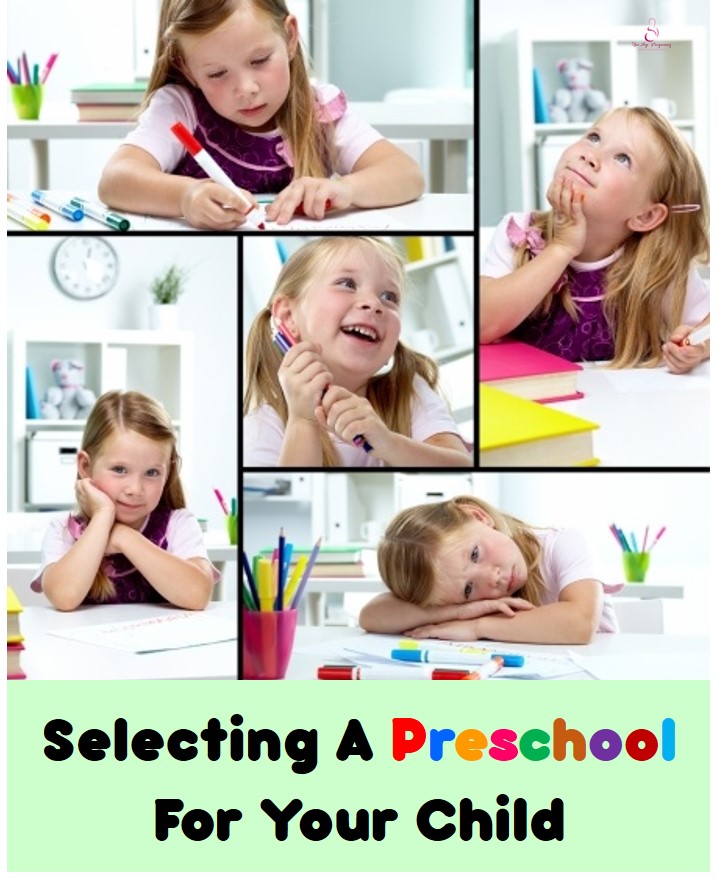 When Sam was the only child, I could invest all my time on him. Now with a second child, I find that my time with him is limited. As a stay-home-mom, I had the privilege of planning his play and learning time so that he can be meaningfully occupied while he is at home with me. There used to be a schedule where I will include time for reading, music, singing and art and crafts. As Sam grew older, his learning capacity also grew substantially. According to researchers, a child’s learning capacity for language especially, peaks between 8 months to 3 years old.
When Sam was the only child, I could invest all my time on him. Now with a second child, I find that my time with him is limited. As a stay-home-mom, I had the privilege of planning his play and learning time so that he can be meaningfully occupied while he is at home with me. There used to be a schedule where I will include time for reading, music, singing and art and crafts. As Sam grew older, his learning capacity also grew substantially. According to researchers, a child’s learning capacity for language especially, peaks between 8 months to 3 years old.
“Even though other abilities are not dictated strictly by the critical period phenomenon,
an area like language development does have peaks and plateaus. Between the ages of 8 months and 3 years a child’s language comprehension and strategies become more sophisticated. For example, an 8-month-old understands a few single words and will look at an object when directed verbally, whereas a 3-year-old understands a 3-word sentence. With respect to expressive vocabulary, in spite of individual variation, a 3-year-old has a vocabulary of approximately 900 words, a threefold increase from the amount at age 2.” (Steinberg)
Indeed, at about 15 months old, I suddenly noticed a tremendous growth spurt in Sam’s learning and language skills. But as I was heavily pregnant with my second child then, Shanae, my energy level was depleting. I knew then, that I wasn’t going to be able to keep up with his spurt. Also, I didn’t want to ‘waste’ his spurting and eagerness to learn. After much thought, we decided to put Sam into a two hours playgroup when he turned 18 months old. In this way, he can continue to play, have fun with other children and also learn at the same time. Also, this will help free up sometime for me to rest and spend with Shanae. Like me, Sharon also placed her daughter Sera at a school when she was 20 months old. Sharon recalled that she was very excited for Sera when she started school as she knew that Sera can get her dose of interactions with peers of her age and to spend her time more meaningfully than going to market with Sharon or watching the television at home.

Concerns and fears
Sharon remembered being worried that Sera would not be able to adjust in school and would be clingy. But Sera surprised her on the first day of school with her willingness to attend school and there were no tears! Sharon recalled what happened that first day of school, “I just dropped her at school, told her ‘Mommy loves you, and grandma will pick you up after lunch okay?’ and I waved goodbye. Sera nodded and walked into the classroom without even looking back at me! I think she was very happy to play in school, where she can interact with all her friends.” Although Sharon was proud of Sera’s independence, she felt a little sad that her firstborn does seem to prefer school than being at home. Nevertheless she shared that she was still thankful that Sera likes school and transited fairly well.
Sharon’s experience was a vast difference in comparison to mine. Many parents advised me that I would need to ‘train’ Sam and give him sometime to adjust to his new school and being apart from me. Looking back, I think I needed to be ‘trained’ to adjust time without him at home more than he needed to be! After all, we have not stayed apart for more than two hours. Even when we did stay apart, my mom was around to care for him – yet even with my mom around he would wail as long as I was away. Yes, he was that clingy! My heart broke just thinking about how long he would wail in school. Will he be insecure with himself? Will he think that mommy don’t love him anymore? Will he think that mommy has abandoned him at the school?
It was quite amusing looking back at the experience I had – Yes, we both cried. I cried! Sam wailed in school (on and off) for as long as two hours for about 2 weeks. I cried too while hearing him calling out to me as I walk out of the school. I had separation anxieties and many worries to start with. I was worried that Sam will have difficulties adjusting to time away from me, that his teachers will not be able to understand his needs. I was concerned if the teachers were genuinely caring and emotionally connecting, and if they would take his allergic condition seriously and ensure that he would not fed with the food that he is allergic to.
Preparation for both mother and child
Today, it’s been 3 months since Sam started his playgroup and I am proud to share that Sam loves school! Now, he will tell me about what he did in school (through his babbles), runs to school and says goodbye to me happily. There will also be times where he will want to stay back longer so that he can play with his friends.

So how did we manage to get to where we are today?
1. Assurance from school
For Sharon, she finds that it was extremely helpful and reassuring that the school principal connected with her on a regular basis via whatsapp – sharing with her about Sera’s growth and sends her photos of the activities in school. As the school teachers have a routine of sharing the activities that was conducted in school through Facebook, Sharon can also visit the page to find out what Sera has been busy with that day. The willingness to connect with the parents gave Sharon more confidence and less worry to place Sera alone in school.
2. Familiarizing him with the environment
I sought help from the teachers to assist me in allowing us to come visit the compound daily, for a week before his school starts. I had in mind to get him familiarize with the journey to school, the school compound as well as the faces of the teachers, in hoping that this will help him to feel more secure and safe when he starts school. I was very thankful that his teachers were very supportive!
So for about a week before school, Sam and I walked daily to school. We talked about school as we walked – the teachers we will see, the activities he will do and the assurance that mommy will promise to come back and pick him. We would also familiarize ourselves with the different spots of the journey to school – such as the cat at our void deck, the basketball court, the man-made tree trunk in the middle of the garden, the yellow flowers and the pigeons by the grass patch next to the school. So he knew what to expect as he walks through the journey to school! I believe that the consistency gave him a lot of assurance.
I guess helping Sam to be familiar with his school was really helpful – Sam never really did fuss whenever we had to take that walk to school. Although he did cry the moment we reached the door of the school.
3. Read a book to him about school
Sharon shared that she introduced the idea of school to Sera through books. She would use the picture book to tell her about the fun she will have in school and the friends she will meet. And when she started school, she would try to be consistent with the book and tells her to “have fun in school and I will see you tonight”.
4. Using of a visual clock
Not that Sam would understand as he was too young to know how to read time, but a friend shared that it would be helpful to use time to assure him that mommy will come back to pick him up. I wasn’t sure how effective it was until I tried it. I drew up a clock and added pictures of the school and myself, and assured him that I will come pick him up at 1030am everyday. The card was then laminated and tied to his backpack. And whenever he felt insecure, the teachers and I would whip it out to remind him of what I said earlier at home.
It was as if Sam knew what I was communicating to him. Whenever I say, “Sam, at 830am (and I pointed to the clock) where will you go to?” and Sam will repeat “School”, “Mommy promise you that I will come and pick you up at 1030am (and I will point to the clock again) okay?” and he will reply “Okay”. And somehow he would cry lesser whenever he sees this card.
5. Favourite companion and comfort food
For a month, I will pack along his favourite character toy (Elmo teddy) to assure him Elmo will go to school with him. It was helpful when the teachers supported the idea and also used Elmo to assure him when he feels insecure in school.
I also packed in his favourite biscuits and bread, and informed the teachers that should he become unsettled, they could try to use them to bring him comfort. Sam will usually settle down whenever he is offered with his favourite biscuits.
6. Set realistic expectations
Set realistic expectations for you and your child. They will definitely need some time to adjust to a new environment; after all it’s a strange place for them. So, expect drama on the first day or week or even month in school. Work with the teachers to support and help your child adjust to school.
7. Keep your promise
Children will be more confident and assured when we adults keep our promise that is made to them. So, pick them up at the time that you promised them you would, try not to keep them waiting for too long. Bring along the treats, or bring them out to the playground if you promised them you would if they attend school, after school.
8. Give lots of assurances
Our children will need lots of praises, assurances and encouragements to feel confident to be on their own in a new environment. After all, they have been with us for so long, and it is only normal for them to make any fuss when they are insecure about the new environment. Try not to reprimand them, but give lots of hugs and assurances that you will come back to pick them up.
9. Saying goodbye
Send them off to school with a big smile regardless of how you actually feel, say goodbye and assure them that you will come back for them. Many teachers have shared with me that it is best for the parent to drop their children off at school and leave the settling to the teachers. The longer the parent chooses to stay behind, allowing the child to see him/her, the longer it will take for the child to settle and adjust to school. If you are insecure about just dropping your child off at school, work out a timeline with the teachers to stay to assure your child in class, and then leave when it’s time to let your child grow his/her own wings to fly.
It is also important say goodbye when you leave (especially when the teachers allow you to sit in in his class), do not secretly disappear. Although saying goodbye is hard, but it will assure them that you will come back. Your child will feel more insecure should you choose to disappear behind his back when he is having fun in school. By doing so, may deter him from playing with his friends.
Sam’s teachers were kind enough to allow me to sit in his class for the first 30 mins for 3 days. Although Sam still cried in the first 2 weeks at school after that, his teachers saw a tremendous improvement in his adjustment at the end of the first week in school. It took Sam about 2 weeks before he finally settled and felt more comfortable to play with his peers and the teachers. I believe that the decision I have made to entrust him with the teachers and not loiter around to disrupt them from settling Sam plays a big part in helping Sam to adjust more smoothly at school.
10. Positive reinforcements
Provide them with treats after school and encourage them to tell you what they did in school. Providing treats (healthy ones of course!) or bringing them to do their favourite activity after school may help them to look forward to seeing you after school. Sam will always look forward to see me after school so that we can take a short break outside his school to chase some birds (his favourite activity at 21 months old) or play at the playground.
It is also important for us to encourage our children to share with us what they did in school – you may not fully understand what they are saying through their babbling, but having such a conversation allows them to know that mommy is interested in what they are doing in school and is proud of them attending school.

Final advice to mothers
Know that you and your child will need sometime to adjust emotionally and physically as he attends school. The pain is ultimately short-termed, but it would achieve your long-term goal in wanting your child to feel comfortable to learn and play in school. Secondly, learn to ‘let go’ after dropping your child at school, try not to hang around the school too much. Go do your favourite activity or have a quiet breakfast on your own. Occupy yourself so that time will pass faster, and you will not be too caught up with your worries. Finally, manage your anxieties by talking to a friend who may have experience in putting their child in a school. Get them to walk with you through the adjustment period and to support you as you persist in keeping your child in school.
Looking back, it has been the best decision ever for me to persist in our decision to put Sam in school. Seeing how he totally enjoys his school and the growth in his learning and language skills has bring me much joy as a parent. Hang in there parents, and know that you will soon see the fruits of your hard labour!
Written by Yvonne Chee






